2022 Volvo XC40 Recharge vs 2022 Volvo C40 Recharge: Compare Electric Cars
Volvo’s decisive march toward offering only electric vehicles by 2030 has begun as indecisively as eggs hatching in a nest. Volvo and Polestar sell three new related electric birdies, the Volvo XC40 Recharge, C40 Recharge, and Polestar 2. The triplets share an electric vehicle platform, propulsion system, and battery pack.
But aren’t these low-volume triplets just fighting each other for the EV sales worm in the family?
I’ve had week-long loans with each of these this year, and they each have their own character once you get to know them up close. A starter EV for the brand, the Polestar 2 is nearly identical to the Volvo C40, as coupe-like takes on the electric crossover. The only benefit of buying the Polestar 2 instead of the C40 would be the air of mystery, or the special feeling of explaining to people how it’s not a Volvo.

2022 Polestar 2
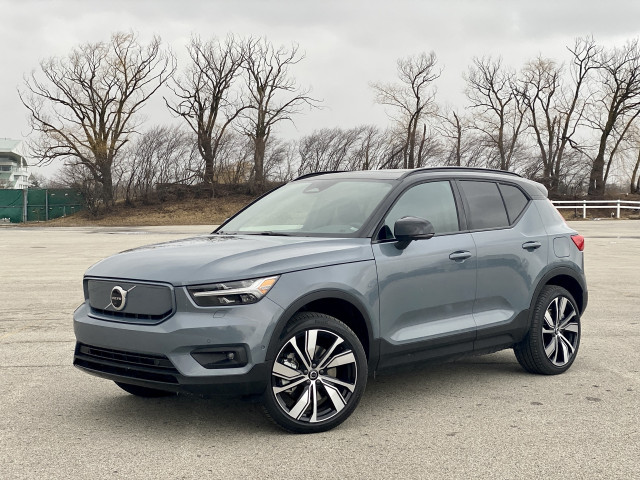
2022 Volvo XC40 Recharge
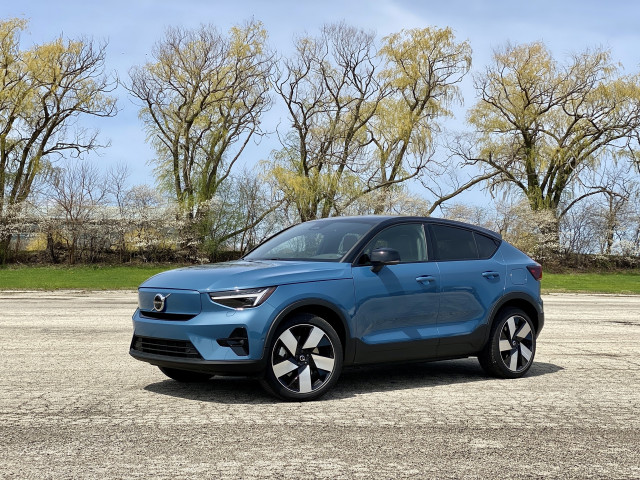
2022 Volvo C40 Recharge
Between the two Volvo Recharge Twin Ultimate models I tested, representing the top of the line for the XC40 and the only grade for the C40, the difference comes down to rooflines, and firsts.
The XC40 Recharge strips out the gas powertrain of the XC40 small crossover for a T-shaped battery pack. It’s pretty much the same as the gas crossover, but with slight design differences, such as a flat slab for a grille, and a charge port on the driver’s side rear fender, same as the C40.
The XC40 Recharge was Volvo’s first electric vehicle, whereas the C40 Recharge was Volvo’s first standalone electric vehicle with no gas counterpart. From the center back, the roofline curves into the tail in what has been described as “coupe-like” in many luxury SUVs. From Germany. It has a beveled air deflector on the roof and a rear spoiler. The light signature is different, too, with sequined LED taillights that ride up the edges of the liftgate to the roof. Overall it looks as distinct as a dorsal fin in the sea of small crossovers, but it also has some aero advantages over the XC40 Recharge.
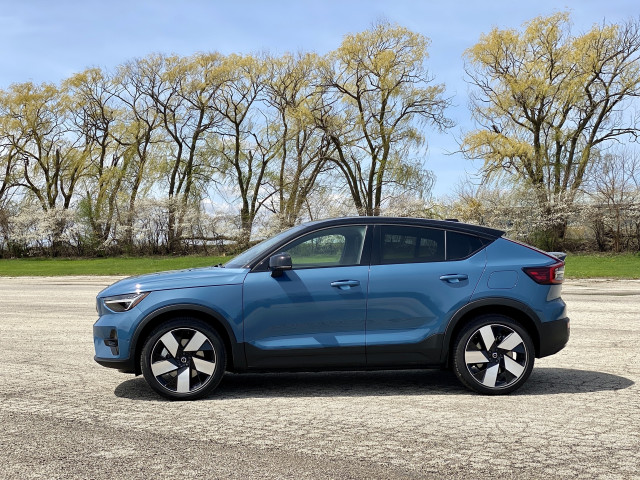
2022 Volvo C40 Recharge
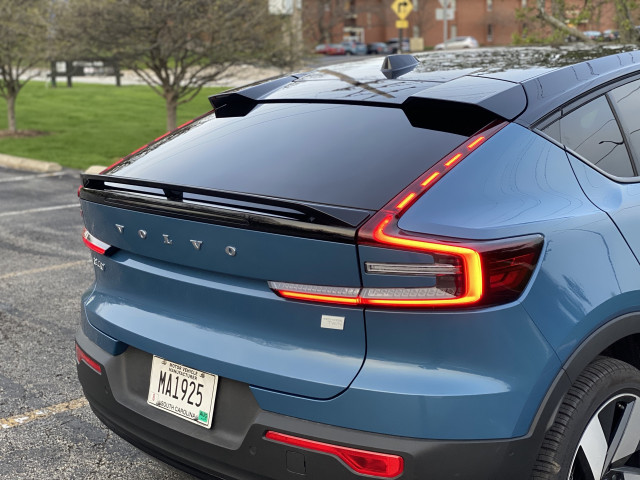
2022 Volvo C40 Recharge

2022 Volvo XC40 Recharge
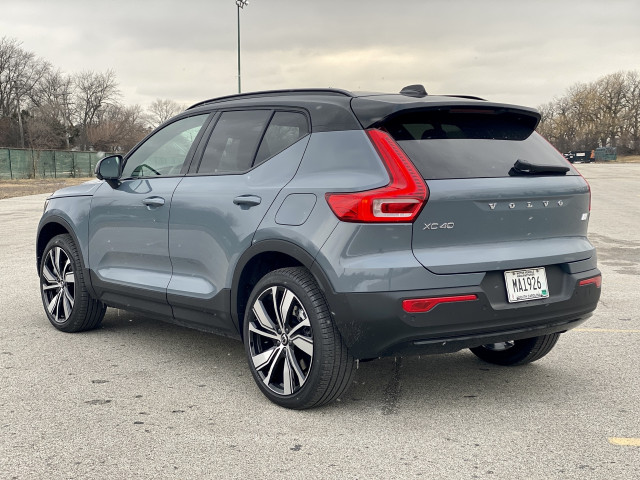
2022 Volvo XC40 Recharge
The C40 is 2.5 inches shorter, so it doesn’t ride as high. That’s one reason it ekes out 226 miles of range (and an EPA equivalent of 87 mpg), compared to 223 miles (and 85 MPGe) on the XC40. They both have a 78-kwh battery pack in their chassis, which includes an unnecessary driveshaft tunnel running down the length of the interior, a vestige to the shared platform used for gas models. Twin motors, one on each axle, make for standard all-wheel drive, and the system puts out 402 hp and 487 lb-ft of torque.
Both models sprint off the line and have plentiful torque for quick passing moves, but they’re not as spry as some EV competitors. The only drive-mode setting is to firm up the steering heft, and there’s only one regen braking menu option, with a grabby one-pedal feel that’s the opposite of coasting in a gasoline car. Yet, the lower profile of the C40 means it handles with more control and doesn’t feel as SUV-like. On cloverleaf ramps and switchbacks, it moves more like a wagon and is more fun to drive.
The sacrifice comes in back. Rear head room shrinks by more than two inches, so four adults won’t fit as well in the C40. Neither will their gear. The raked rear windshield cuts the cargo volume from 57.5 cubic feet (with the 60/40-split rear seats down) in the XC40 to 48.7 cubic feet in the C40. A passthrough and tiered cargo floor add some versatility in both models. The drive tunnel preempts that open airy cabin feel of other EVs, however.
The C40 makes up for it with a fixed glass roof, whereas the XC40 relies on a panoramic sunroof, same as the gas model. Same as other Volvos, a spartan interior and dash materials that contrast metallic elements with soft touch surfaces give it a level of sophistication missing even on other leather-bound luxury cars. The C40 tester’s Fjord Blue door panels and carpet made the car even cooler. Another neat advantage in the C40 are topographic dash and door panels that glow at night and appear to change color depending on how daylight hits them. It’s a subtle, tasteful take on ambient lighting that eschews the clubby neon vibe of competitors. From Germany.
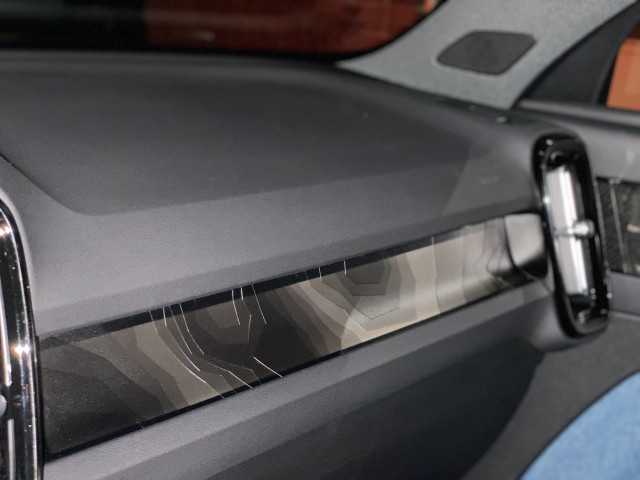
2022 Volvo C40 Recharge

2022 Volvo C40 Recharge

2022 Volvo C40 Recharge

2022 Volvo C40 Recharge
The climate, audio, navigation, and infotainment settings rely on a 9.0-inch touchscreen that’s well-integrated into the dash, but functions for drive modes, regen, and heating can get lost in the screen. Running on Google’s operating system, however, the voice commands and navigation are good, and the map display in the 12.3-inch digital instrument cluster is excellent. There are limitations to that cluster, as if Volvo relegated most secondary information aside from battery charge and speedometer to the touchscreen in the name of safety. The feature set is the same between the models, as are the superlative crash-test ratings and driver-assist features. The lack of a start/stop button takes getting used to.
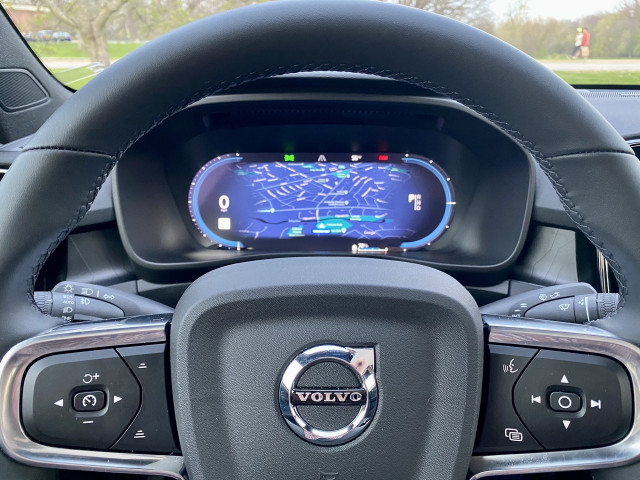
2022 Volvo C40 Recharge
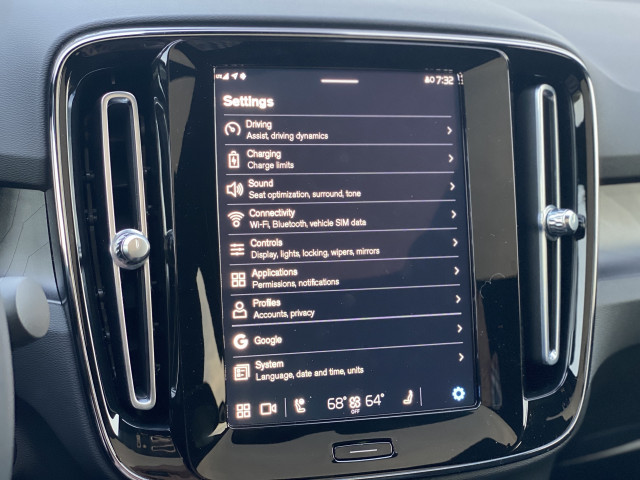
2022 Volvo C40 Recharge

2022 Volvo C40 Recharge
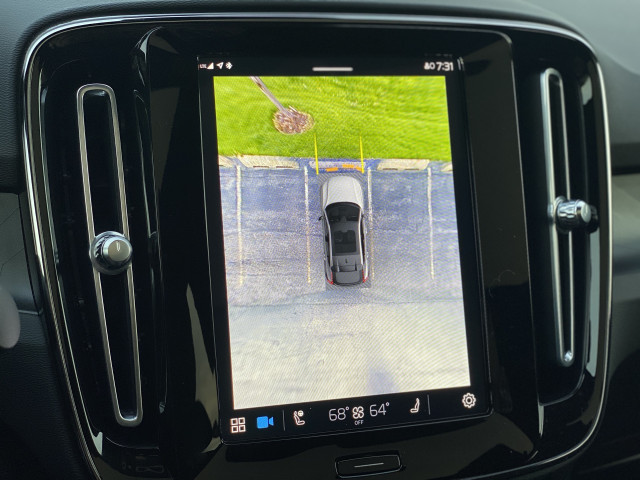
2022 Volvo C40 Recharge
Charge rates are average for the class. On a Level 3 DC-fast charger with an output of 150 kw, they go from 10% to 80% in 37 minutes. On a Level 2 240-volt home charger, it takes about 8 hours. Neither model is that efficient, averaging 2.6 miles per kwh, which comes up short of the Hyundai Ioniq 5 and Ford Mustang Mach-E. It’s well short of the 3.6 miles in the Tesla Model Y, which has a similar $60,000 price of both Volvo Recharges.
On the window stickers, the biggest difference between the C40 and X40 Recharge models was a $450 price disparity in favor of the XC40. But the C40 had heated rear seats, as if to make up for less head room.
The XC40 Recharge is the established, familiar player, but the C40 has more appeal with its distinctive looks and sportier driving behavior. Maybe both of these birds can fly, in time.

